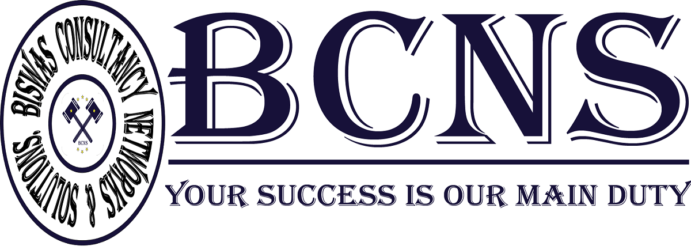
Business Development and Marketing Procedure
1. SCOPE
1.1. This procedure covers all roles, responsibilities, and authorities related to the Business Development and Marketing at XXX
2. PURPOSE
2.1. The purpose of this procedure is to ensure that performed Business Development and Market Process is clearly identified and support the work needs in XXX.
2.2. Applicable for all business development related activities and concerned statutory & regulatory requirements.
2.3. Identifying a proper methodology to be adopted by the Business Development & Marketing department to deal with potential clients, starting from marketing.
3. REFERENCE DOCUMENTS
3.1 XXX Quality Manual,
3.2 Business Plan
3.3 Sales Procedure
4. TERMS & DEFINITIONS
1.1. Business Development: Business development entails tasks and processes to develop and implement growth opportunities within and between organizations.
1.2. Marketing: Marketing is the activity and processes for creating, communicating, delivering, and exchanging offerings that have value for customers, clients, partners, and society at large.
1.3. Client: any entity which the company provides with products or services, including showroom customers, retailer and companies handling projects.
5. RESPONSIBILITY AND AUTHORITY
5.1 MARKETING HEAD
5.1.1 Oversees responsibility of the Supersonic Marketing Program
5.1.2 Provides Support for the following Programs/Activities and /or Managers
- Website Coordination
- Marketing Campaigns
- Marketing Strategies
5.2 MARKETING STAFF
5.2.1 Support program executive’s activities with project wise or use of advertising materials for event promotion. Responsibilities & Advertising materials include the following:
- Follow up with the customer on various stages
- Able to manage
- Responsible for checking the leads from all marketing portals
- The executive should be available within office hours & available on mobile 24X6
- Responding to the leads, follow up with the Lead, Customer
- Maintain dress code
- Ability to handle two to three marketing executives
- Good Communication Skills is mandatory
6. DETAILS OF PROCEDURE
6.1 Business Development
To develop a new business/project, there has to be an idea about a product or service for which there is a market. The first thing is to assess whether the basics of the idea will hold. Briefly sketch the product, outline the potential market, define the business concept and estimate the initial funding.
6.2 Prepare a Project Brief.
6.2.1 A Business plan for 4-5 years is developed by business development. It is derived based on the initial market research conducted by the organization and the organization’s vision and strategy.
6.2.1 The annual plan is derived from the annual sales plan, project data and customer data. It essentially describes the type of projects and products, the organization will look out for possible development. The same is aligned with the expansion plan for a year. Based on the annual plan a project brief will be prepared.
6.3 Conduct Proactive Internal and Market Research
6.3.1 The internal research team will conduct market research in the target market to identify high potential areas for future development. Research on competitor’s strategy, customer demographics, psychographics, adequacy of public services, facilities available, accessibility of transportation, retail stores in the area etc. will be carried out.
6.3.2 The customer database will be checked for the potential database. A pan will be developed and regular updates from dealers will be received. The dealers include the ones registered with the company dealing in a target locality or the set of dealers having name & experience in dealing in target locality. Information received from dealers will be captured in a dealer form.
6.3.3 The BD team will collect proposals from different sources like advertisements in newspapers and trade journals, government body notifications/ local authorities will be approached. This approach is an informal approach whereby Local authorities of destined locality like office, registration office, city survey office etc will be approached. The required information will be gathered on a one to one basis through interaction.
6.4 Competitive Analysis
6.4.1 The Marketing Manager will conduct the competition research. The Department will learn about the competition in order to understand where the organization stands in the market. This will also help to determine the desired market positioning. The following steps will be done in order to assess the competition:
- Determine the company´s top competitors (4-6 competitors).
- Set up criteria or mechanism of comparison; choose different variables to use in order to compare, such as strengths/ weaknesses, price, product quality, exposure, brand reputation, etc.
- Find out what projects competitors are targeting within the market segment; assess if the organization can develop an offering that can take clients away from them.
- Use the organization’s advantage: visit the competitors´ showrooms (if they have any) anonymously, like any regular customer and collect valuable input to use in your research.
6.5 Capture of Requirements
6.5.1 During the Contracting Sales procedure/Trading sales procedures, customer requirements are captured and recorded.
6.5.2 The Business Development Manager will also ensure that XXX has suitable access to all applicable statutory and regulatory requirements which may apply to the work.
6.5.3 The Business Development Manager will also document any requirements not specified by the customer, but for which XXX Knows will apply to the work.
6.6 Review of Requirements
6.6.1 The BD Manager will oversee the review of incoming requirements, to ensure XXX has the capability to meet those requirements. This must occur before any commitment made to the customer.
6.6.2 The review of requirements may require a formal risk assessment, at the discretion of management. If so, the risk assessment shall define the expected risks associated with the work, as well as a mitigation plan for each identified risk. If useful, risks may be ranked by likelihood of occurrence and severity of the impact of the risk, if it does occur. Management may elect to accept certain risks as a function of doing business, but if so, this must also be indicated. When a risk assessment is conducted, this will be filed with the appropriate requirements information where?.
6.6.3 If a formal quotation is to be prepared for the customer, this shall be developed by the Sales Executive with input from all proper departments and staff, and released to the customer after reviewed and approved by the Sales Manager.
6.6.4 When a contract or purchase agreement is subsequently received, it shall be reviewed by the Sales Manager to ensure there are no differences between it and any previously submitted quotations. If there are differences, the Sales manager shall resolve these with the customer before the contract is accepted.
6.6.5 Acceptance of a contract or purchase agreement is to be done by the Sales manager and recorded in the Purchase order.
6.7 Changes of Requirements
6.7.1 Where the customer requests changes to active work, the changes must also be captured, reviewed and approved prior to committing to the change.
6.7.2 The change will consider the impact on work already delivered, work underway, and planned work. Problems or concerns over implementing the change will be communicated by [who?] with the customer. Such changes may require renegotiation of contracts.
6.7.3 If changes are agreed upon, the Sales Manager will work with the affected departments to implement the change. The disposition of existing work shall be determined by management, along with input from the customer.
6.7.4 Where changes are required by XXX, these will be negotiated with the customer before implementation, and a record of the customer’s acceptance maintained.
6.8 Marketing
6.8.1 Essentially marketing is about anticipating and meeting the needs of the client in a manner consistent with the organization’s objectives, such as being profitable. Perhaps the best way to explain the breadth and scope of marketing is to look at the concept of the 7Ps – seven integral components of marketing.
| People | The profile of potential clients and customers |
| Planning | Research, analysis, objectives, and strategies |
| Positioning | The position a product or service should have in the market relative to competing products |
| Product | The service or product you are selling |
| Price | The value of the product or service as determined by demand and perceptions of quality and value |
| Place | Where the product or service is delivered or distributed |
| Promotion | Techniques used to sell or position the product or service |
6.9 Marketing Plan.
| Sr. No. | Input | Activity | Output |
| 1 | Business Plan | Interaction with / visit to the market and customer | Market / Customer Information / data |
| 2 | Customer data | Collection of Enquiry | Enquiry |
| 3 | Customer Enquiry | Logging of New Enquiry | Enquiry Register (ER) |
| 4 | Customer Enquiry | Preliminary Assessment of Enquires | Preliminary Assessment Report, Risk Assessment Form |
| 5 | Enquiry Register, Preliminary Assessment Report | Sending enquiry to Design & receiving Technical Feasibility Report (TFR) | TFR |
| 6 | TFR | Preparation of Quality System Requirement Review Checklist (QSRRCL) and sending of quotation, if the enquiry is feasible & updating of ER | Cost Estimate, Quotation, updated enquiry Register QSRRCL |
| 7 | Feasibility Report | Sending of regret letter, if the enquiry is not feasible | Regret letter |
| 8 | Customer Purchase Order | Receipt & Review of Purchase Order | Contract Review Checklist (CRC) |
| 9 | CRC | Release on Development Clearance Memo (DCM) to Design along with QSRRCL for development. | D C M. |

